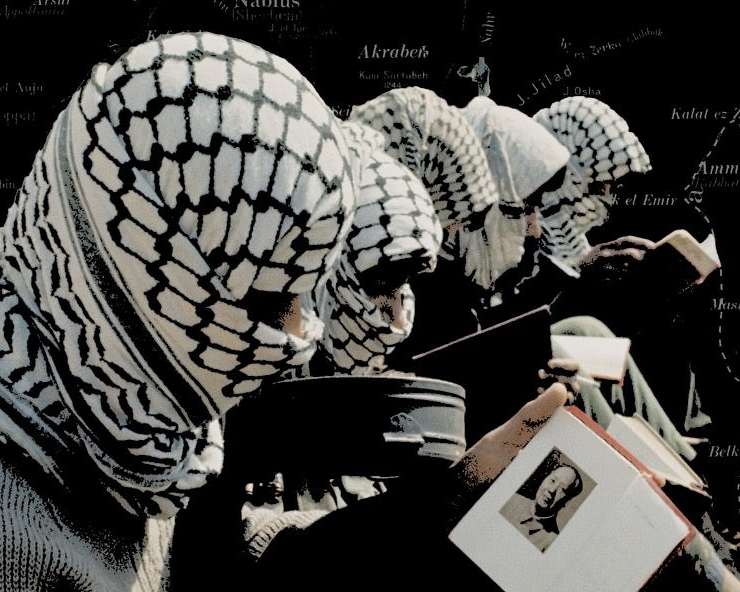
Post-October War Paralysis
Since al-Aqsa Flood, the Zionsit entiy has resembled a wounded state lashing out blindly. Despite relentless bombardment, the tide of time has turned against Tel Aviv. Hamas’s surprise offensive shattered the regime’s famed intelligence and deterrence, leaving its political establishment scrambling for relevance. Two years later, the regime still fails to eliminate Hamas a reality cemented in the Sharm al-Sheikh negotiations, where the Zionist regime sat across the table from the very resistance it vowed to annihilate.
US bourgeois analyst Fareed Zakaria aptly called that summit “an American rescue plan for ‘Israel’” a global attempt to pull Tel Aviv out of the quagmire created by its own hubris.
Northern Front: The Hezbollah Factor
The regime’s second strategic failure came on its northern front. Initial cyber and aerial operations against Hezbollah including the now-infamous “Pagers Operation” failed catastrophically. The Zionist military hoped to reach Beirut; instead, they stalled within 8 kilometers of the border. Efforts to disarm Hezbollah backfired, solidifying Lebanese unity with the army, the people, and the Resistance now aligned. What began as a campaign to weaken Hezbollah turned into a political and military victory for it.
In fact, colonel (resigned) Dr. Jack Neria, a researcher at the Jerusalem Center for Foreign Affairs and Security, warned that despite the severe blows Hezbollah suffered in the past two years, the organization has completed a rapid rehabilitation with Iranian support. According to him, “More than 2,500 Hezbollah commanders were eliminated, including senior members of the Shura Council, but the Iranians intervened immediately, transferred hundreds of millions of dollars, and rehabilitated the human resources and military structure.”
Neria confirms that Hezbollah currently has about 90,000 fighters and continues to arm itself and build a defense system in southern Lebanon. “The Shiite vision is that even if they are defeated, they see it as a sacred mission. No one in Lebanon is capable of disarming Hezbollah, and they are already preparing for the next confrontation with ‘Israel’ after Gaza,” he specifies.
Southern Shock: Yemen’s Ascendance
Yemen has emerged as the region’s unexpected game-changer. Responding directly to Iran’s call to “cut off the Zionist regime’s lifeline,” the Yemeni Armed Forces crippled the regime’s Red Sea access and threatened its logistical core:
Arab and International Isolation
Tel Aviv’s reckless strike on Qatar was a turning point. Instead of demonstrating deterrence, it alienated Arab states. Saudi Arabia quietly moved closer to Pakistan, while Gulf capitals grew wary of the regime’s unpredictability. In the West, pro-Zionist media networks like those under Rupert Murdoch struggled to contain a growing anti-Zionist backlash. From London to New York, streets filled with protestors, and even the UN halls turned their backs on Netanyahu’s speeches a symbolic collapse of decades of propaganda investment.
Iran’s Shadow and the Shattered Myth
The occupation’s confrontation with Iran marked the end of its myth of invincibility. For the first time, Tel Aviv faced a peer adversary capable of penetrating its air defenses and striking strategic assets. Iranian missile salvos forced Zionists to experience war in its raw form not as distant images but as immediate terror. The “weak Iran” narrative evaporated in the dust of direct confrontation.
Internal Breakdown
Inside the entity, social order is unraveling. Educational and economic institutions have collapsed; political resignations and military purges dominate daily headlines. Once the backbone of Zionist power, the Golani Brigade lies decimated, Unit 8200 has been crippled by Hezbollah, and Mossad’s networks have been exposed in 28 countries. Cyber offensives by Resistance hackers have compromised key Zionist systems.
What remains is not the the regime of 2023, but a fractured state staggering under internal and external collapse.
Source: @albalaghpakistan with slight edits